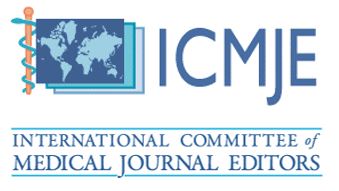
1.png)


The Borneo Journal of Medical Sciences (BJMS) is open access, double-blind peer-reviewed medical e-journal is under the Faculty of Medicine and Health Sciences, Universiti Malaysia Sabah. This Journal was launched in 2007 and is published regularly three times (January, May, and September) per year since 2017. There is no publication fee. BJMS editorial board consists of prominent researchers from different countries who are experts in their fields.
AIMS & SCOPES:
BJMS, an internationally disseminated biomedical publication, provides scientific media for communication especially for Borneo region and research worldwide. The Journal welcomes manuscripts on basic and clinical research on medical and health-related issues. It publishes original research articles, review articles, case reports, concept papers, short communications, and clinical quizzes. We maintain a high standard with a rejection rate of more than 30%.
The Borneo Journal of Medical Sciences (BJMS) is an open access journal dedicated to the belief that scientific research should be freely and universally accessible. Recognising that research is a product of societal investment, BJMS ensures that all published content is immediately and permanently available online.
All articles are published under the Creative Commons Attribution-NonCommercial (CC BY-NC 4.0) license, enabling users to read, download, copy, distribute, and adapt the material for non-commercial purposes, provided proper credit is given to the original authors and the source. This model supports transparency, accessibility, and the global exchange of medical knowledge.
Editorial process flow chart:

Publishing Ethics
The Editorial Board of the Borneo Journal of Medical Sciences and the Publisher adheres to the principles of the International Council of Medical Journal Editors (ICMJE), the World Association of Medical Editors (WAME), the Council of Science Editors (CSE), the Committee on Publication Ethics (COPE), the World Medical Association (WMA), and the International Society of Managing and Technical Editors (ISMTE).
For Editors
Publication Decisions
Peer review
Fair play
Journal metrics
Confidentiality
Declaration of Competing Interests
Vigilance over the Published Record
For Reviewers
Contribution to Editorial Decisions
Confidentiality
Alertness to Ethical Issues
Standards of Objectivity & Competing Interests
Duties of Authors
Reporting Standards
Data Access and Retention
Originality and Acknowledgement of Sources
Multiple, Redundant, or Concurrent Publication
Confidentiality
Authorship of the Paper
Hazards and Human or Animal Subjects
Declaration of Competing Interests
Notification of Fundamental Errors
Image Integrity
Clinical Trial Transparency
Revenue sources
This Journal is supported by Universiti Malaysia Sabah (UMS).
Advertising
This Journal advertises through social media i.e. Linkedin, Twitter, Instagram and does not use any commercial platform.
![]()
Borneo Journal of Medical Sciences (BJMS)
ISSN: 2710-7353 (E-ISSN); 1985-1758 (PRINT-ISSN)
Faculty of Medicine & Health Sciences,
Block E, Level 1, Universiti Malaysia Sabah,
Jalan UMS, Kota Kinabalu, 88400, Sabah, Malaysia
Website: https://jurcon.ums.edu.my/ojums/index.php/bjms
E-mail Address: bjms@ums.edu.my
© Universiti Malaysia Sabah 2025
